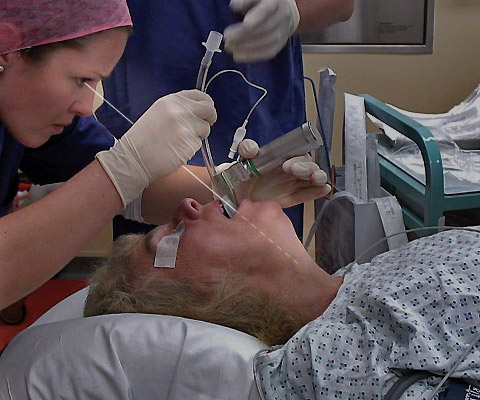Sniffing the Morning Air
Fig 1 is a video showing how to position the patient to optimize the airway.
Select Play to view the video.
Extension of the upper cervical spine tends to reverse the recession of the mandible, increasing the space available in the hypopharynx and raising the larynx.
Flexion of the lower cervical spine brings the head forward.
The combined effect is to shorten the distance from the mouth to the laryngeal inlet, and decrease the angulation of the natural airway. The increase in 'submandibular space' minimizes the obstructing tendency of the tongue.
A second benefit is that, with the mouth opened, line of sight from the upper incisors to the larynx is optimized, which makes this the ideal position for laryngoscopy and tracheal intubation (Fig 2).
